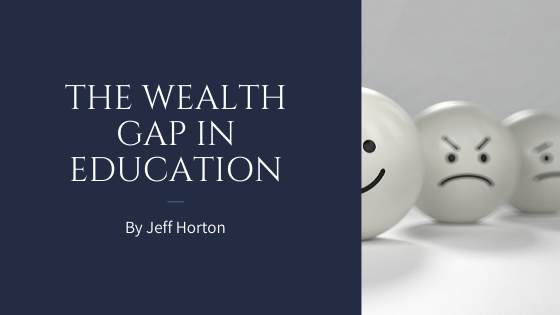At the end of 2017, the Economic Policy Institute (EPI) released a report that looked at gaps and trends in education inequalities and strategies to address them. EPI found with extensive research a conclusive demonstration that a child’s social class is one of the most significant, if not the single most, predictor of their educational success. EPI found that performance gaps begin in the earliest years of a child’s life and fail to lessen over the years that follow.
In a paper published in Demography, Fabian Pfeffer, SRC research assistant professor, used PSID, or the Panel Study of Income Dynamics, data to analyze the educational wealth gap. Pfeffer found a large and increasing gap in college attainment by family wealth. These results not only suggest that higher household wealth is positively correlated with education outcomes, but also that children from higher wealth households achieve better outcomes than those from lower wealth households.
Research has documented that this vast inequality has been growing substantially over the last decade, particularly since the Great Recession of 2008. Family wealth may have become even more critical to support direct investments in education opportunities over the previous decades, such as buying a home in good neighborhoods with a higher education budget.
PSID data also documents the extent to which changes in the distributions of family wealth impact the wealth gaps in education. PSID analyses speak to the potential long-term implications of the most recent and sharp increase in family wealth inequality for the future distribution of educational outcomes.
These gaps in educational outcomes show an unmet need for children and, therefore, untapped talent within the country. The fact that there is a relationship between economic inequality and education inequalities presents a social failure of the ideal “American dream.”
In early 2018, the National Center for Education Statistics released a report that looked at a nationally representative group of 18,000 kids selected to mimic the diversity of the country. The report tracked kids who attended kindergarten in 2010 and 2011 to see how they spent their summer. The report showed that kids from wealthier families participated in enriching activities over the summer, such as summer camp and cultural outings.
As the wealth gap continues, wealthier families are left with more money to spend, as well as more significant portions of their money to invest in their children. Families with high-income are not only spending more in general but are also targeting their spending toward their children; a luxury low-income families do not have.
This unequal investment in children due to income inequality is creating a foundation for further unequal adult and children’s lives in the future.

